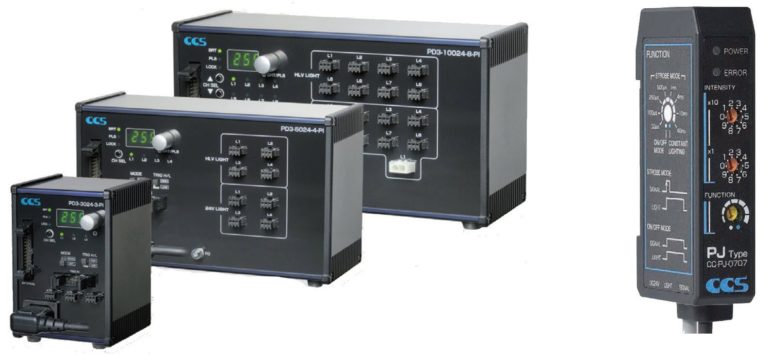Basic Strobing
Overdrive Strobe Function with Inline or Built-in Drivers Increases Light Intensity by 4X-8X
When objects are moving at higher speeds and a shorter exposure is required or when the optical system attenuates the light, internal and inline controllers with “Overdrive” strobe capability may be used. By using a PNP or NPN trigger, these lights will send a higher-than-normal current to the LEDs for a very short period, corresponding to the trigger pulse width, increasing the light’s intensity by 4X-8X during the strobe pulse.
Many external light controllers have knobs/pots to control intensity. While good for lab use, the external controllers are typically triggered programmatically by the machine vision system. The machine vision system or its PLC will trigger the camera and light when an image needs to be acquired.
External light controllers can provide single or multiple channels, triggering capability, and communication between the machine vision control system and the lighting controller. Many provide overdrive capability for higher-intensity strobe applications.

When is an External Light Controller Most Useful?
When tight, integrated control of multiple lighting and trigger parameters or multiple lighting channels are required, an external lighting controller provides programmatic capabilities that permit improved integration of the lighting controls into the vision system’s control software, often using an SDK for the lighting controller. External controllers provide:
Contact R.J. Wilson, Inc. to discuss your
lighting and control requirements.